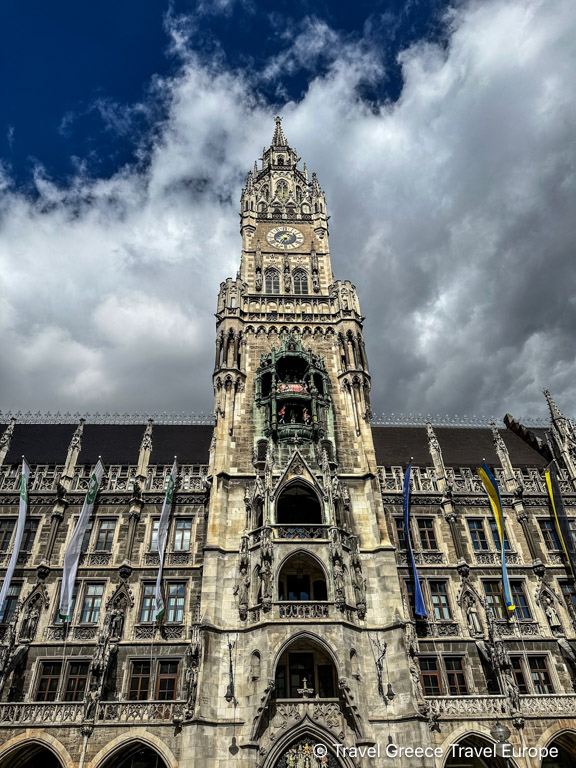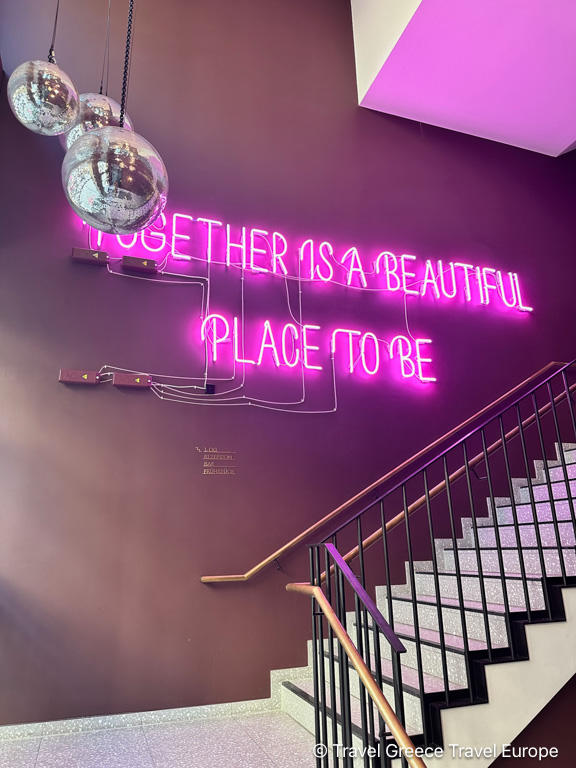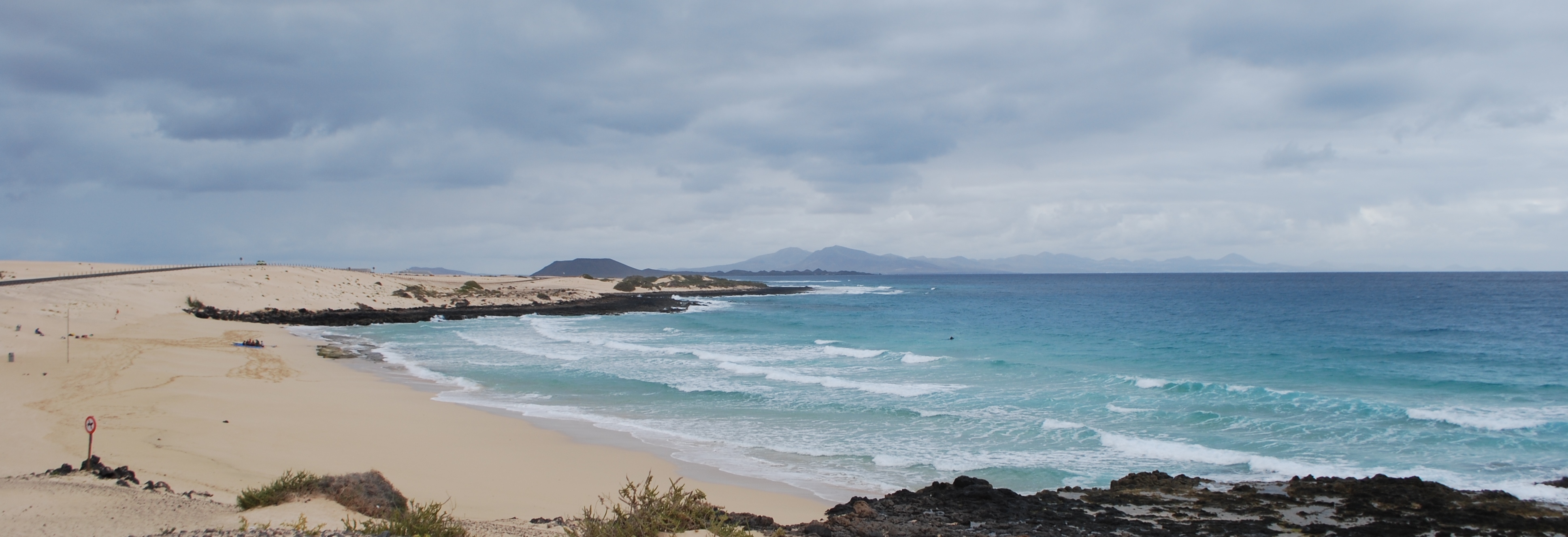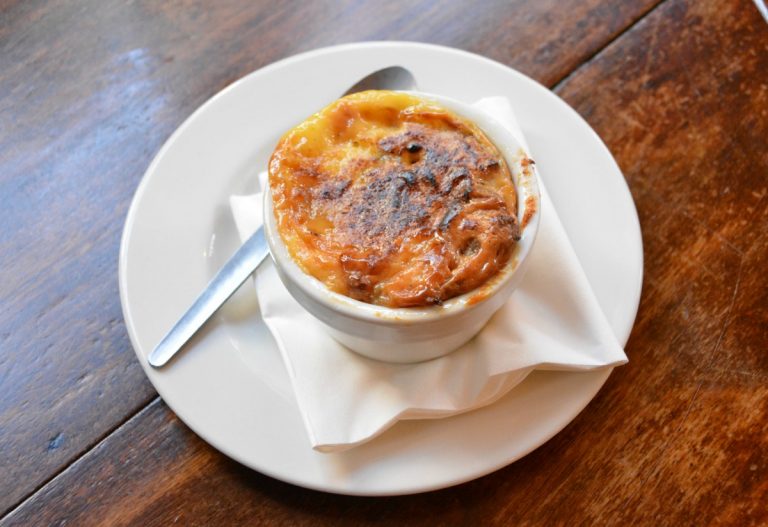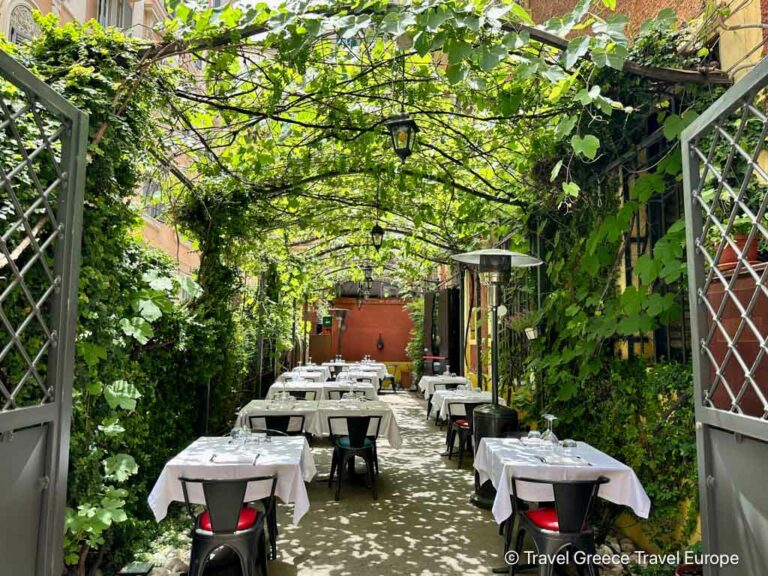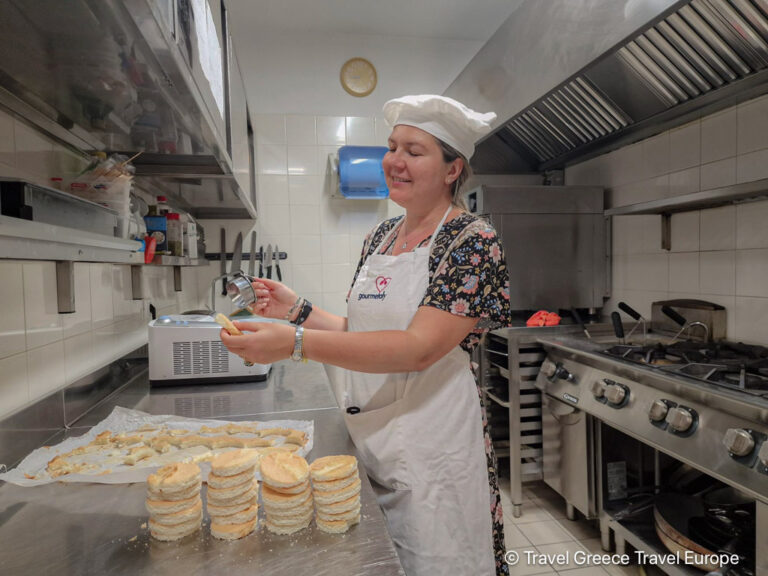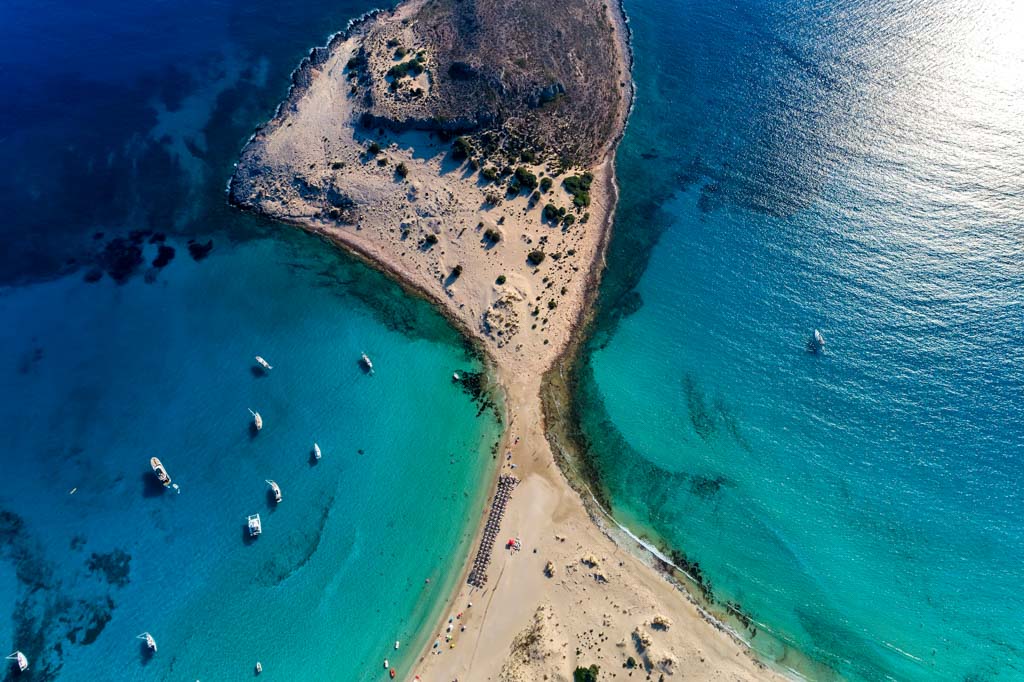2 Days in Munich: Top Sights, Bavarian Flavors, and Must-Do Experiences
2 days in Munich may seem like a short time, but it’s enough to fall in love with the Bavarian capital’s rich history, cultural charm, and stunning architecture. From medieval squares to lush gardens, from beer halls to world-class museums, Munich offers an immersive experience that captures the best of Germany. Whether you’re intrigued by historic royal residences or want to savor the best of Bavarian cuisine, this guide will help you make the most of every hour in this vibrant city. With efficient public transport, a walkable old town, and a warm, welcoming atmosphere, Munich promises an adventure that blends tradition and modernity seamlessly. Let’s dive into how you can explore Munich’s best highlights over an unforgettable two-day stay. If you enjoy biking you can also join this Guided City Tour by Bike.
A Brief History of Munich
Munich’s history begins in the 12th century when it was founded by Henry the Lion, Duke of Bavaria, around a Benedictine monastery. Its name, “Munich” or “München” in German, means “by the monks,” a tribute to its ecclesiastical origins. The city’s strategic location on the salt trade route led to rapid growth, and by 1255, Munich became the residence of the Wittelsbach dynasty, which would rule Bavaria for nearly 800 years.
Under the Wittelsbachs, Munich flourished as a cultural and artistic center, and their influence is still evident today in the opulent palaces and grand buildings that characterize the city. By the 19th century, King Ludwig I spearheaded a transformation that made Munich a center of the arts, establishing numerous galleries and inviting renowned architects to beautify the city.
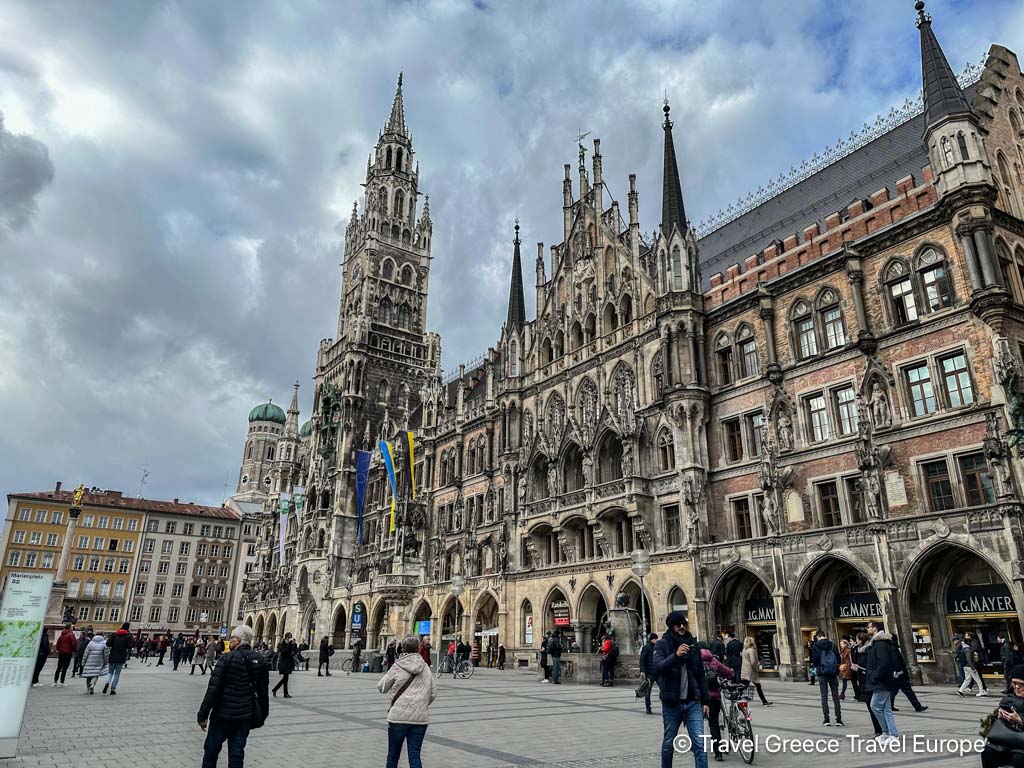

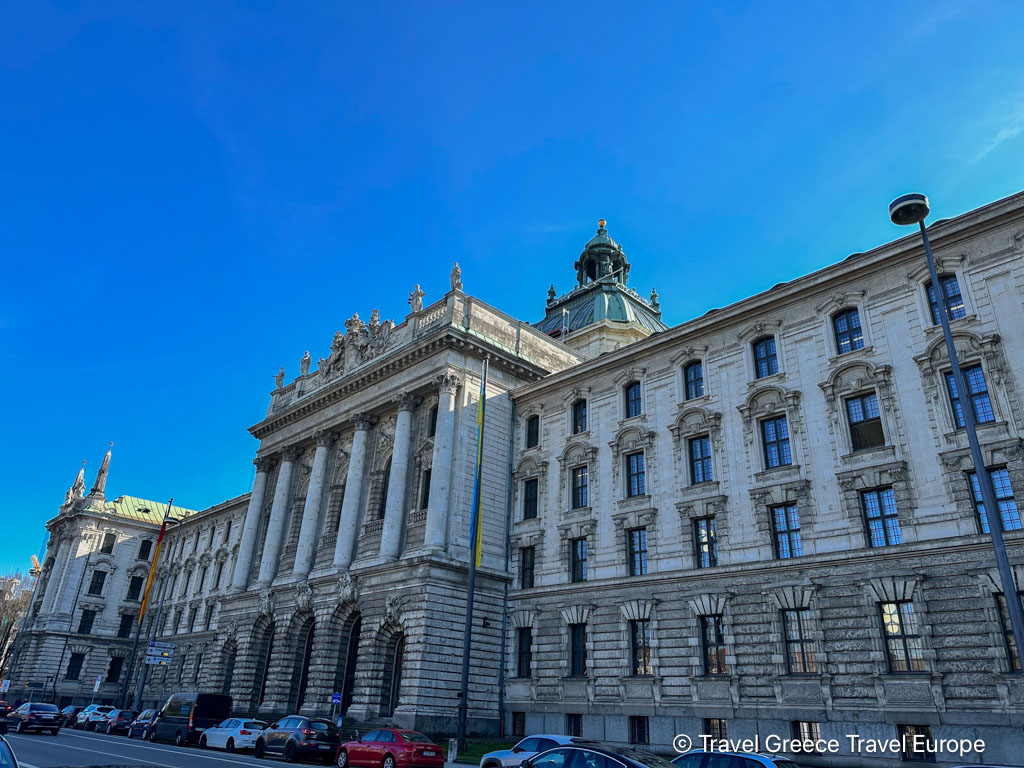

However, Munich’s history is not without its dark chapters. In the 20th century, it became the birthplace of the Nazi Party, playing a significant role in the early years of the movement. Post-World War II, much of Munich lay in ruins, but the city’s resilience shone through in its impressive reconstruction. You might enjoy taking this Third Reich & WWII Tour Walking Tour.
Today, Munich represents not only its proud Bavarian heritage but also modern progress and cultural diversity. It’s a city where history echoes through the halls of its museums and palaces, and its spirit comes alive in bustling markets and beer halls.
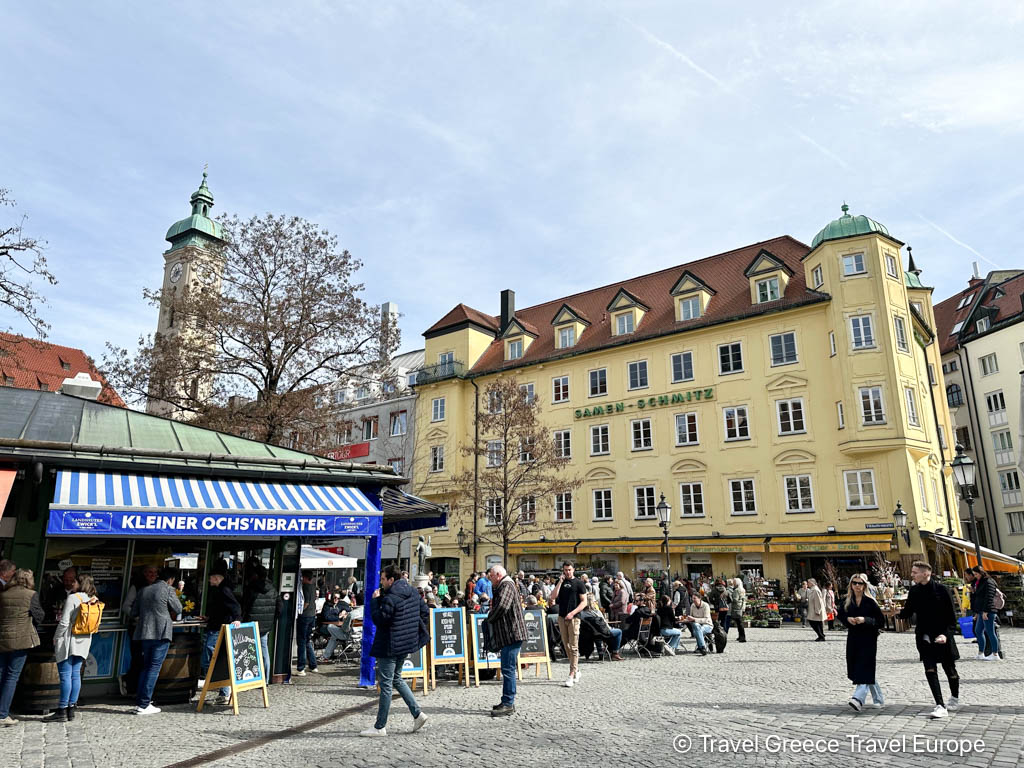
Getting to Munich
Munich, the capital of Bavaria, is well-connected and easy to reach whether you’re coming from within Europe or abroad. The city’s main airport, Munich Airport (MUC), is one of Germany’s busiest, offering direct flights from major cities worldwide. From the airport, the quickest way into the city center is by the S-Bahn train lines S1 or S8, which take about 40 minutes. Alternatively you may pre-book your airport transfer with Welcome Pickups.
For travelers already in Germany or nearby countries, Deutsche Bahn (DB) trains provide efficient connections from cities like Berlin, Vienna, and Zurich to Munich Central Station (Hauptbahnhof). Alternatively, Munich is well connected by bus services like FlixBus for a more budget-friendly option.
Day 1 in Munich: History, Culture, and Bavarian Cuisine
Morning: Marienplatz and Altstadt (Old Town) Exploration

Start your Munich journey at Marienplatz, the beating heart of the city since its founding in 1158. The square, with its lively atmosphere, historic charm, and constant hum of activity, is the perfect place to begin your exploration.
If you arrive here at 11 a.m. you will witness the enchanting Glockenspiel performance at the Neues Rathaus (New Town Hall). Admire the colorful mechanical figures spring to life, dancing, jousting, and telling stories from Munich’s past—an iconic spectacle not to be missed. You might also enjoy taking this Old Town Guided Walking Tour or a Guided Tour of New Town Hall.
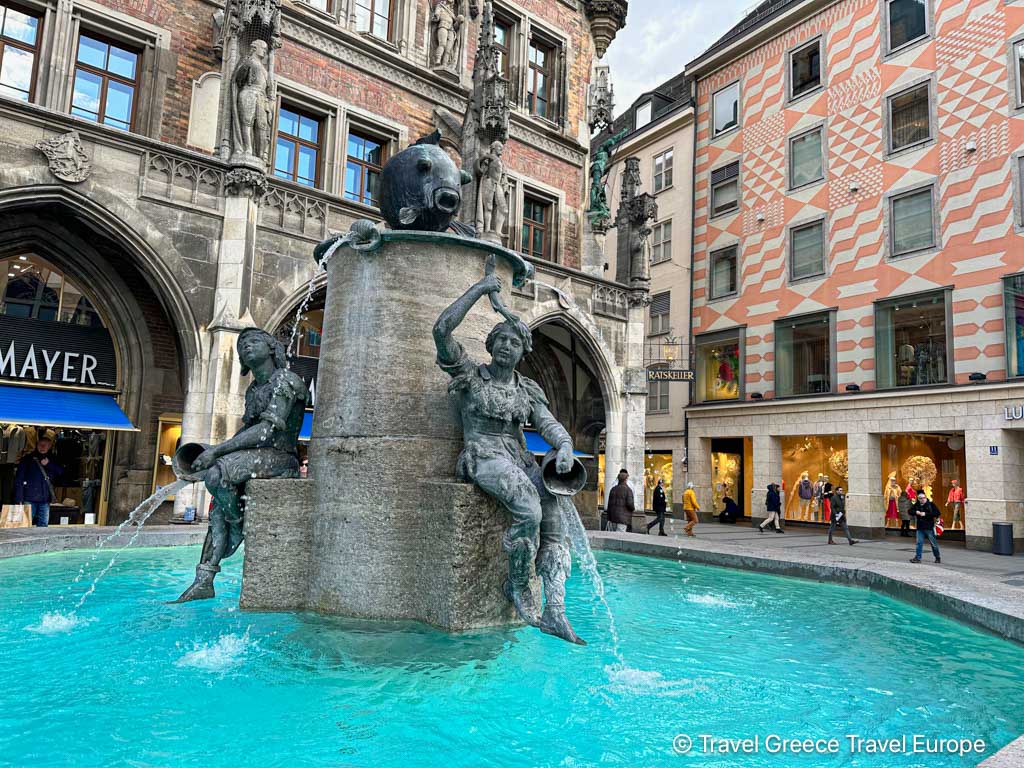
Here you will also come across the Fischbrunnen, a beautiful fountain at Marienplatz adorned with intricate sculptures. The fountain was once used by fishmongers to wash their goods, and it also symbolizes the city’s resilience—having been reconstructed after World War II using its original fragments. It’s a lovely spot to pause, soak in the ambiance, and perhaps make a wish.
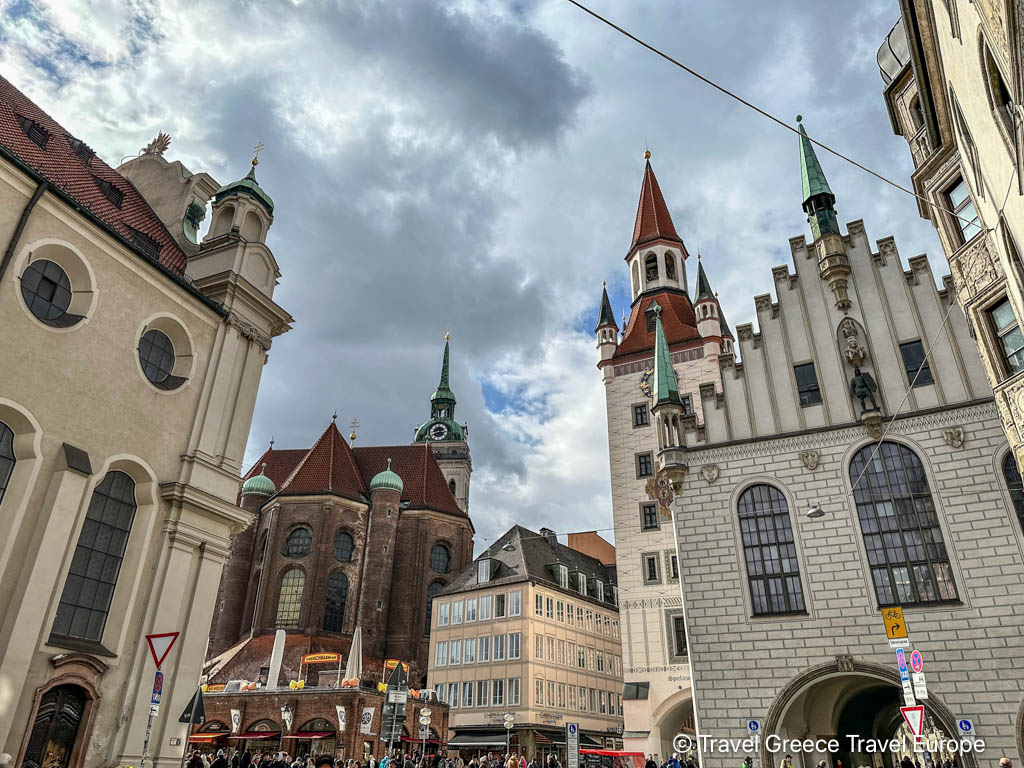
From there, stroll over to the Altes Rathaus (Old Town Hall), which exudes medieval character, and gaze up at the Mariensäule, the towering golden statue of the Virgin Mary that has watched over Munich since 1638. This column was erected to celebrate the end of Swedish occupation, and its gleaming figure remains a powerful symbol of protection and hope.
Visit the Churches: Discover Munich’s Spiritual Heritage
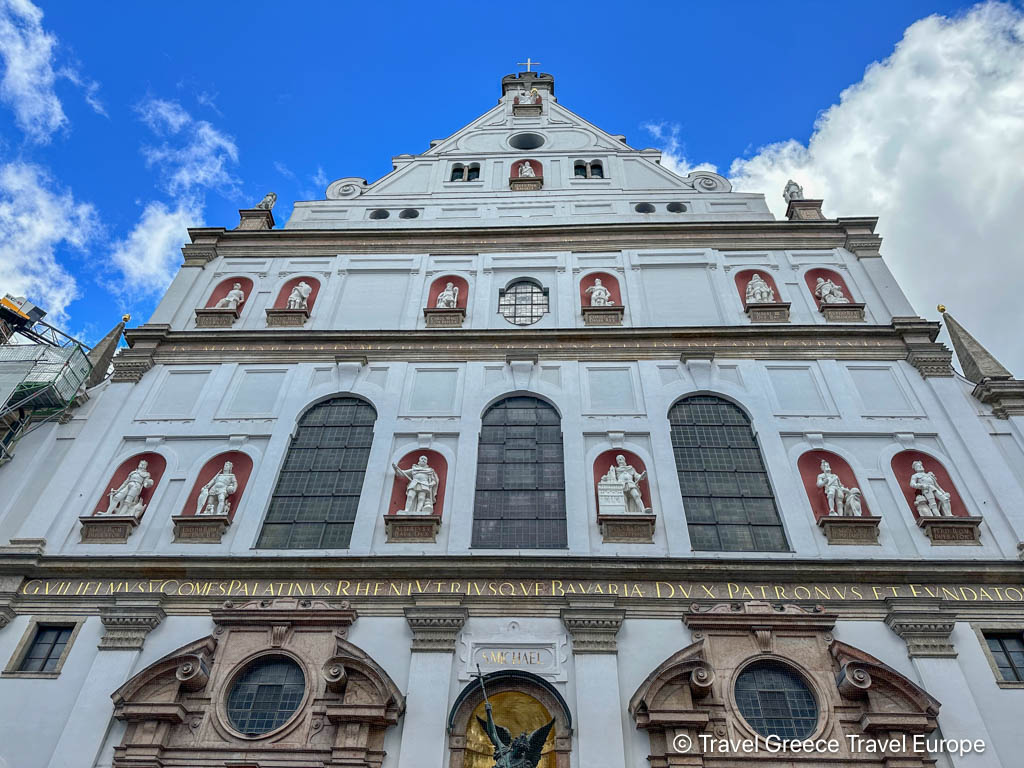
Start with St. Michael’s Church (St. Michael Kirche), one of the most important Renaissance churches north of the Alps. Built in the late 16th century by Duke William V as a symbol of the Catholic Counter-Reformation, it boasts a stunning barrel-vaulted ceiling and an intricately decorated altar. The church also serves as the resting place for many members of the Wittelsbach family, including King Ludwig II, adding to its historical significance. As you enter, take a moment to appreciate the richly detailed façade, adorned with statues of saints and angels, which represents the powerful legacy of Bavaria’s devout rulers.
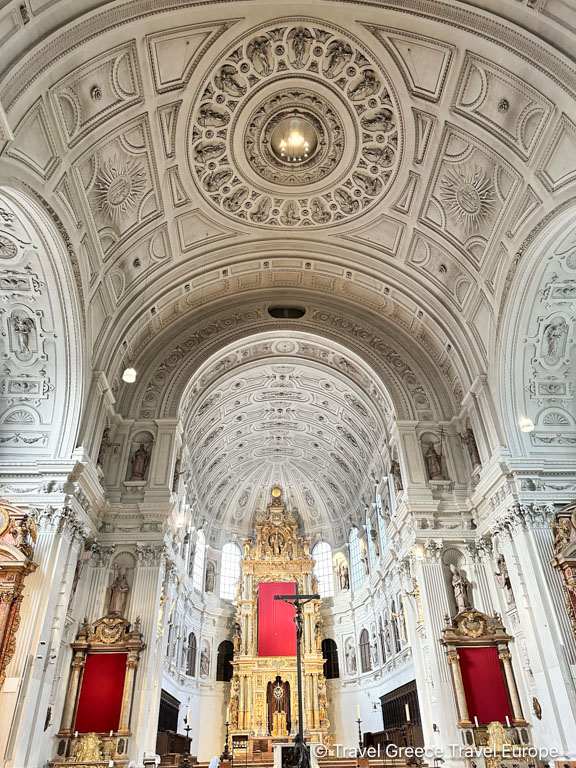
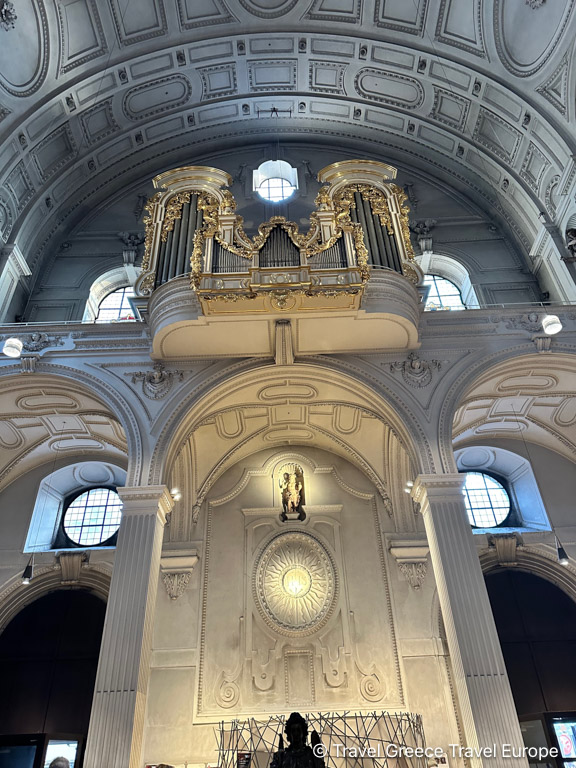

Next, visit the Church of Our Lady (Frauenkirche), Munich’s most iconic church and an unmistakable symbol of the city’s skyline. Its twin towers, crowned with distinctive copper domes, rise high above the city, and can be seen from miles away. The church was completed in the late 15th century in the late Gothic style, and it has been an important part of Munich’s history ever since.
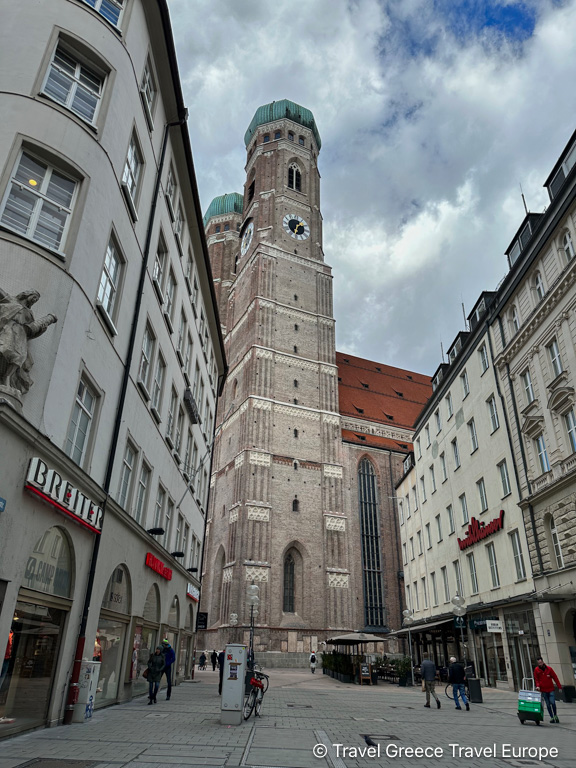


Step inside to experience its serene and spacious interior, adorned with simple yet elegant Gothic features. Don’t miss the “Devil’s Footprint”—a mysterious black mark on the floor near the entrance that, according to legend, was left by the devil himself. For the best view of Munich, climb to the top of the South Tower, where you’ll be rewarded with panoramic views extending to the Alps on a clear day.

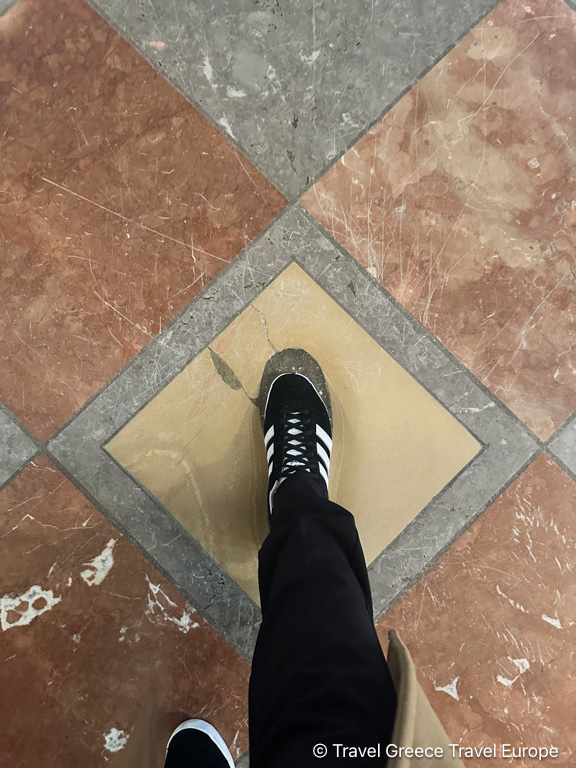
As you descend, take a leisurely wander through the charming streets of the Altstadt (Old Town). The cobblestone lanes are lined with centuries-old buildings, quaint shops, and inviting cafés, each turn revealing another piece of Munich’s storied past. The medieval architecture, with its decorative facades and intricate carvings, creates a fairytale-like atmosphere that makes you feel as though you’ve stepped back in time.
For good luck, rub the shiny snout of the bronze boar statue, known as the Wildschweinbronze, which stands near the Bavarian Hunting and Fishing Museum on Neuhauser Straße, created by sculptor Martin Mayer in 1976. It symbolizes the importance of hunting in Bavarian culture.
Go Shopping at Kaufingerstraße
Karlsplatz, often referred to as Stachus by locals, is one of Munich’s busiest and most famous squares, known for its vibrant atmosphere and rich historical significance. It serves as a major transportation hub and gateway to the city’s pedestrian shopping area, Kaufingerstraße, leading towards Marienplatz.
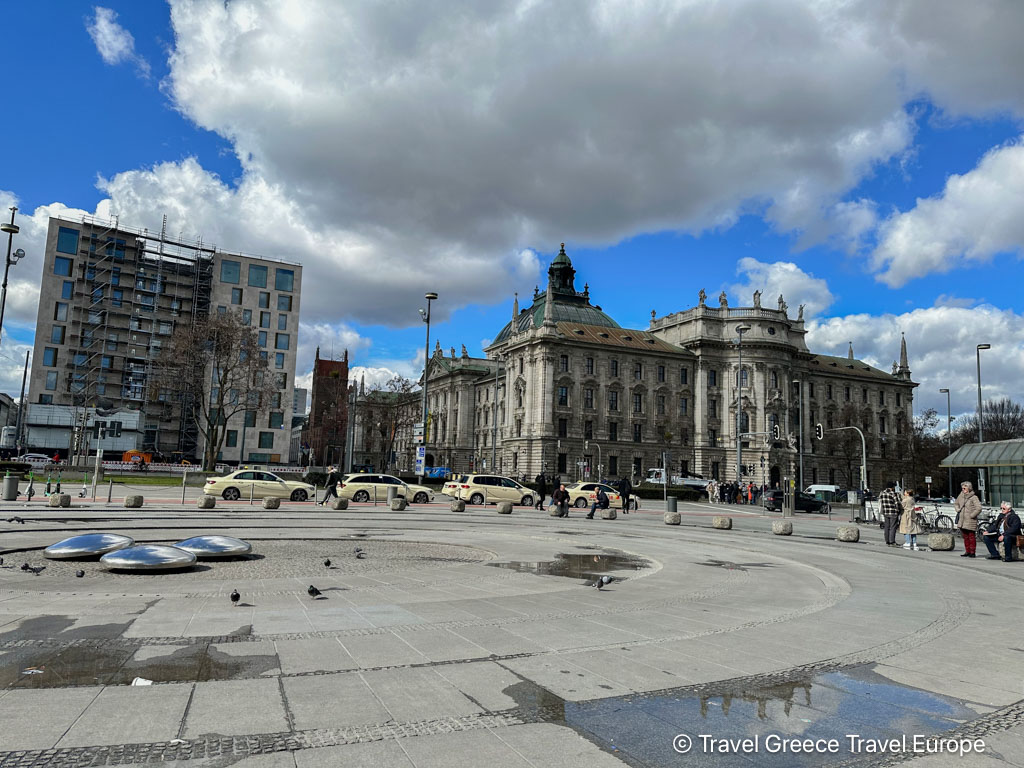
Karlsplatz is notable for its fountain, which becomes a lively spot during the warmer months, with locals and tourists gathering around its cascading waters. The square is framed by the Karlstor, one of the original city gates from Munich’s medieval fortifications, adding historical charm to the bustling area.

Kaufingerstraße is one of Munich’s most popular and bustling shopping streets, offering a vibrant mix of high-street and international brands. Running from Karlsplatz (Stachus) to Marienplatz, it’s one of the oldest streets in Munich and a key part of the pedestrian zone, making it a lively and accessible shopping destination.
Midday: Viktualienmarkt – A Culinary Delight

Head over to Viktualienmarkt, just a short walk away. This bustling food market has been around for over 200 years and is the perfect spot to sample local Bavarian delicacies. Grab a freshly baked pretzel, savor a traditional Weißwurst (white sausage) with a side of sweet mustard, and enjoy a frothy pint at one of the beer garden tables.
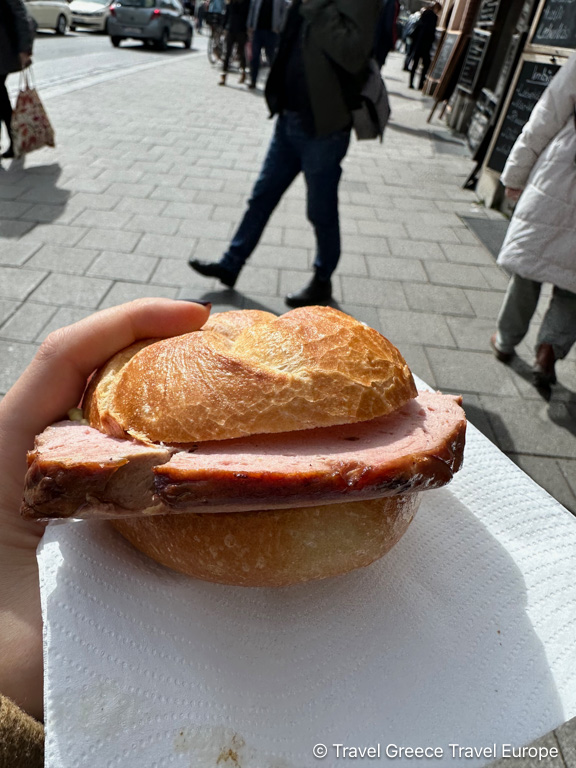



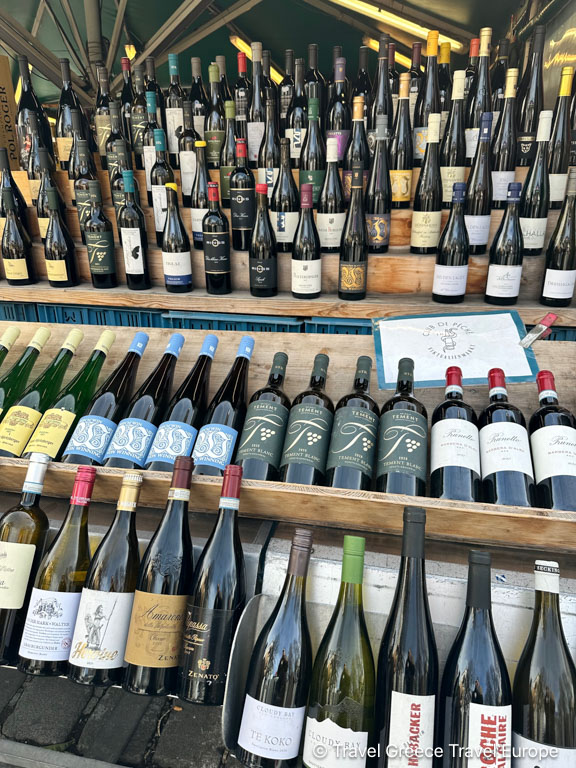
Afternoon: Residenz and Odeonsplatz
In the afternoon, dive into Munich’s royal history with a visit to the Munich Residenz, once home to Bavarian monarchs. Explore its lavish rooms, including the Antiquarium, Europe’s largest Renaissance hall, and the Treasury, brimming with opulent artifacts. Check out this Residenz Museum Tickets and 2,5-hour Guided Tour.

After the Residenz, stroll to Odeonsplatz, framed by stunning architecture like the Feldherrnhalle, a monumental loggia inspired by Florence’s Loggia dei Lanzi, and the Theatinerkirche, with its intricate Baroque façade and vibrant yellow exterior that stands as a tribute to Italian Baroque influences; step inside to admire its richly decorated interior, and note that King Otto of Greece, a member of Bavaria’s Wittelsbach dynasty, is buried here in the church’s crypt, adding to its historical significance.
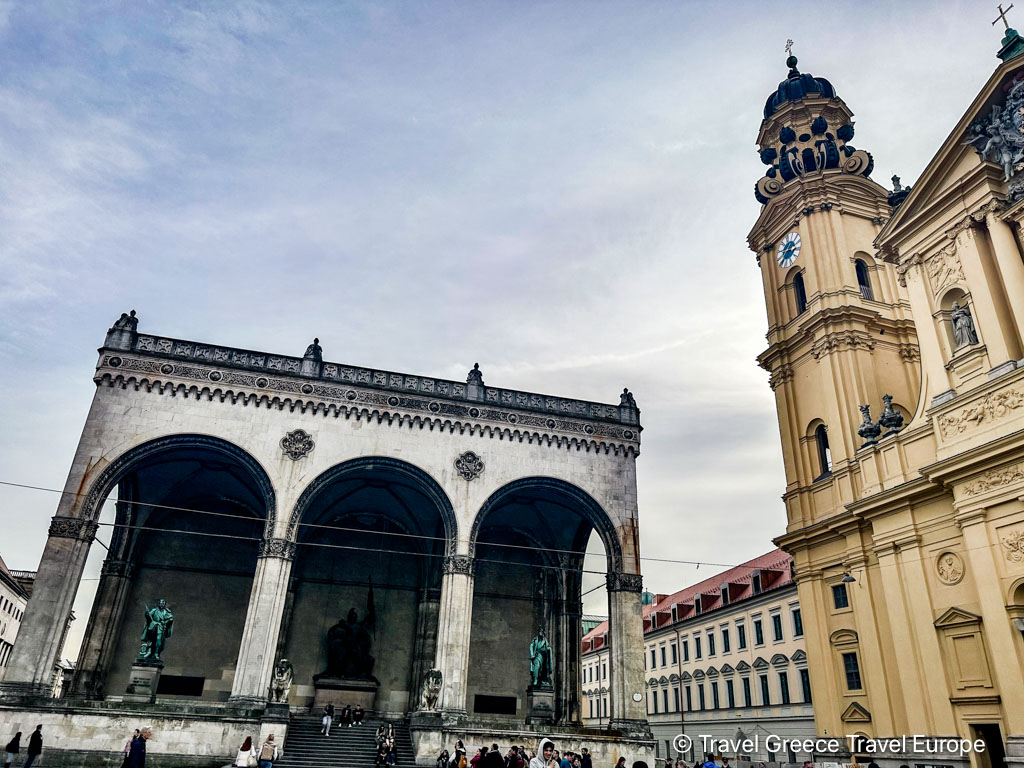
From here, you can walk through the Hofgarten, a lovely Renaissance garden, before reaching the impressive Bavarian State Chancellery.
Visit the Max-Joseph-Platz
Max-Joseph-Platz is a grand and culturally significant square in Munich, surrounded by iconic buildings such as the National Theatre, home to the Bavarian State Opera and Ballet, known for its impressive Neoclassical façade.

The square also borders the Munich Residenz, the former royal palace of Bavarian monarchs, and includes the Residenz Theatre (Cuvilliés Theatre), showcasing the city’s regal past. Another notable structure on the square is Palais Toerring-Jettenbach, a beautiful Neoclassical building adding to the area’s elegance. At the center stands the statue of King Maximilian I Joseph, paying tribute to Bavaria’s first king and his contributions to Munich.
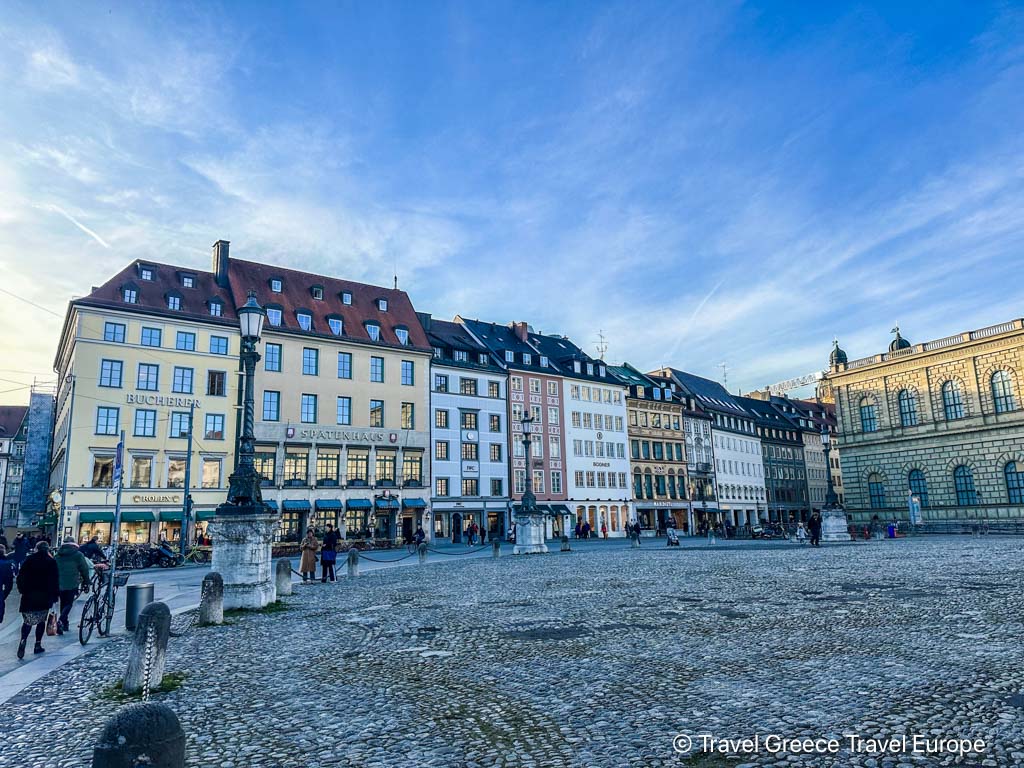

The square often hosts cultural events, making it a vibrant blend of architectural splendor and Bavarian heritage. The streets surrounding the square are dotted with luxury brands boutique shops.
Evening: Dinner and Beer at Hofbräuhaus

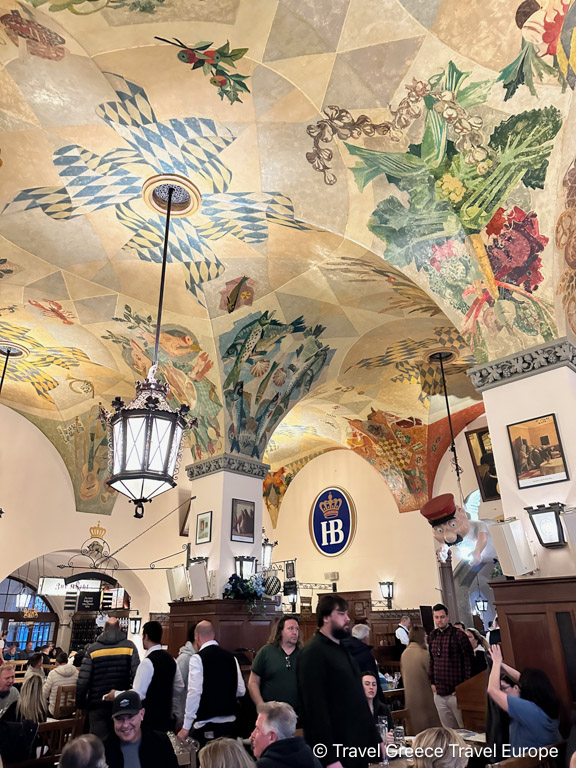
End your day at the world-renowned Hofbräuhaus. This historic beer hall offers an unforgettable Bavarian experience, complete with oompah bands, traditional Bavarian dishes like Schweinshaxe (pork knuckle), and liters of locally brewed beer. The festive atmosphere is unmatched—a true Bavarian evening. As this place gets super busy, be prepared to share a table with other guests.
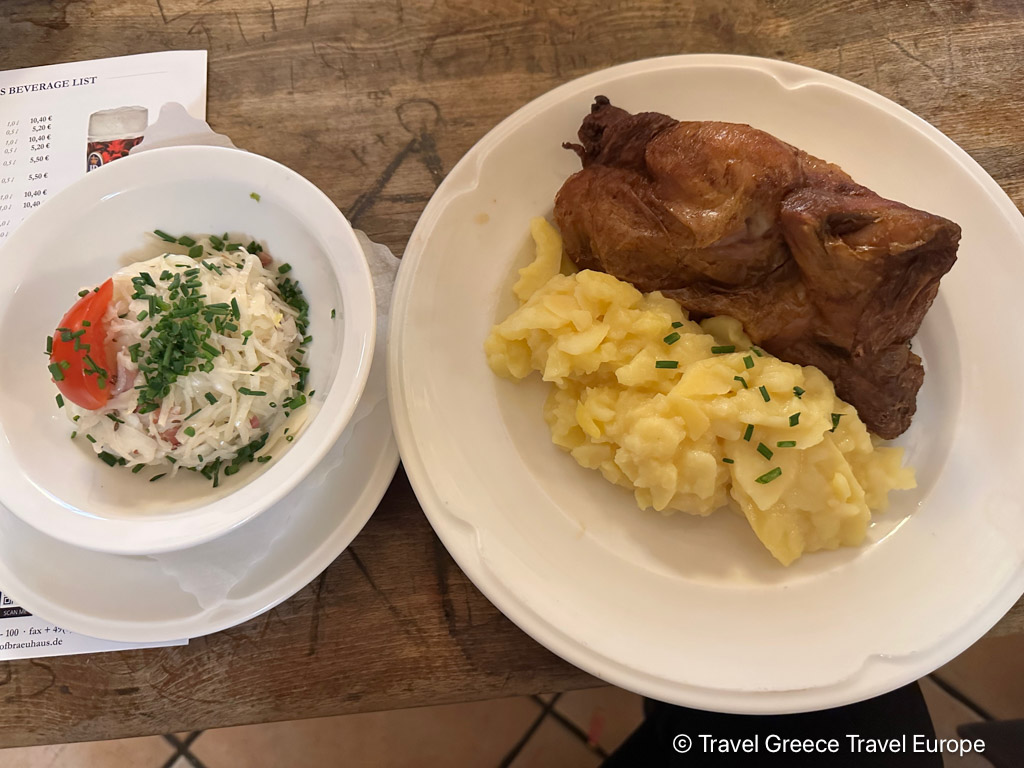
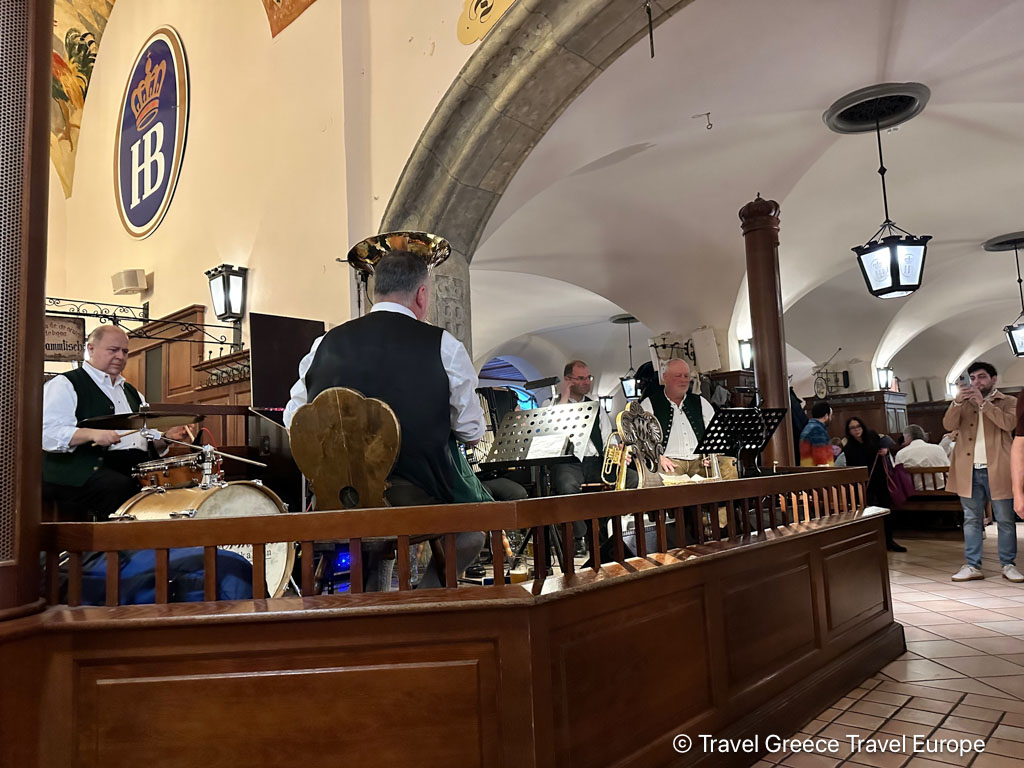
Day 2: Art, Gardens, and Modern Munich
Morning: English Garden and Breakfast
Start your second day with a relaxing stroll through the English Garden, one of Europe’s largest urban parks. Begin at the Chinesischer Turm (Chinese Tower), where you can grab a Bavarian-style breakfast at the beer garden. Walk along the park’s winding paths, and don’t miss the Eisbach Wave, where surfers show off their skills right in the middle of the city.
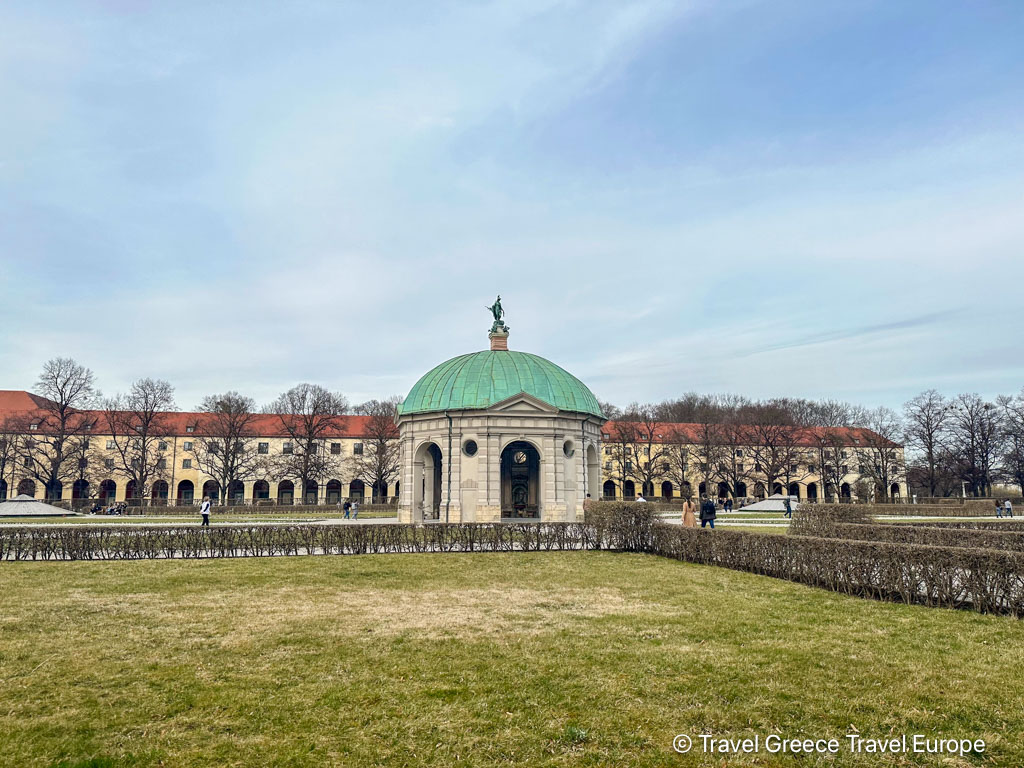
Midday: Alte Pinakothek and Museum Quarter
Head over to the Kunstareal (Museum Quarter), where you can choose to explore the Alte Pinakothek, home to an incredible collection of European masterpieces, including works by Rubens, Rembrandt, and Dürer. Art lovers can spend hours here marveling at the classic works housed in this vast museum.
Alternatively, if modern art is more appealing, visit the Pinakothek der Moderne, which showcases contemporary art, design, and architecture. The Lenbachhaus is another great option, featuring works by the Blue Rider group, co-founded by the famous Wassily Kandinsky.

While in the area you can also admire the “Ring” by Mauro Staccioli which is a notable piece of public art located near the Old Botanical Gardens. Created by the renowned Italian sculptor Mauro Staccioli, this striking red ring sculpture is an impressive example of his minimalist and site-specific style, which seeks to engage viewers with their urban surroundings.
The sculpture, characterized by its large size and bold, geometric form, stands out vividly against the natural backdrop of the garden, creating an interesting visual contrast. Staccioli’s “Ring” embodies his approach of placing simple yet impactful shapes in the landscape to provoke thought and dialogue about the relationship between art, space, and the environment. The bright red color and circular design invite passersby to reflect on notions of infinity and continuity, while also adding a touch of modernity to the historic area.
Shopping at Fünf Höfe
Fünf Höfe (Five Courtyards) is a unique shopping and lifestyle complex located in the heart of Munich’s city center, just a short walk from Marienplatz. What makes Fünf Höfe special is its blend of modern architecture, art, shopping, and culinary delights, all integrated into a set of interconnected courtyards, creating a sophisticated urban space with a contemporary vibe.
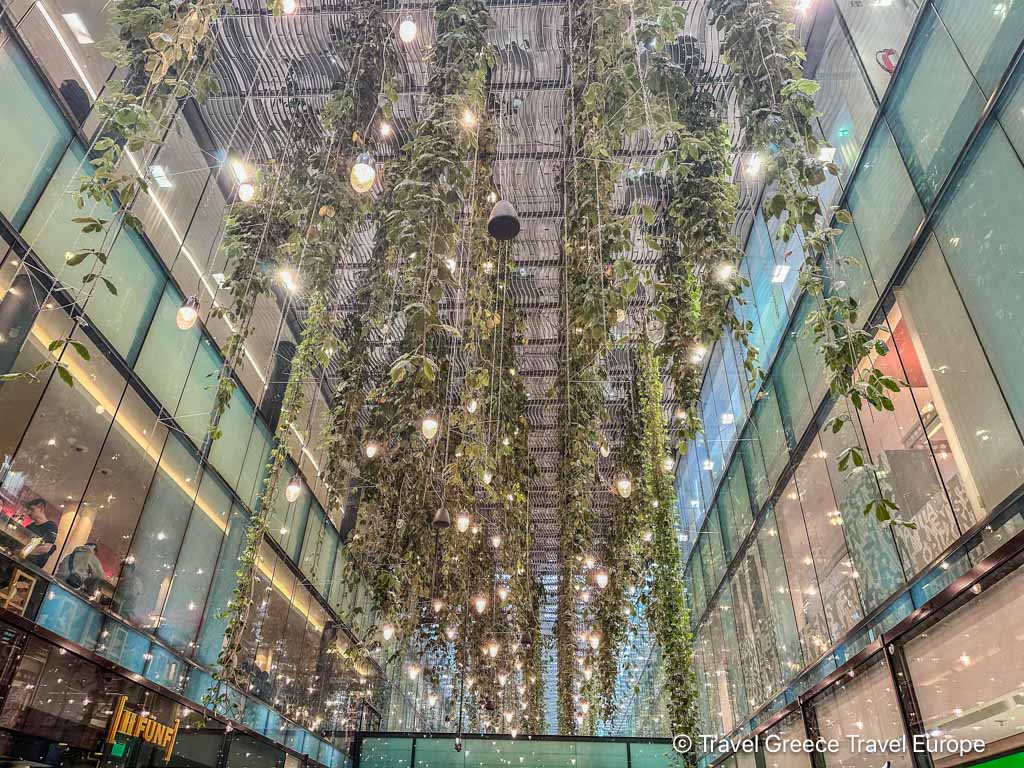
The complex was designed by renowned Swiss architects Herzog & de Meuron, blending the old and the new with a stylish yet minimalistic design that integrates seamlessly with Munich’s historic surroundings. The courtyards are adorned with innovative installations, including the impressive “Hanging Gardens”—an art installation by Tita Giese featuring suspended greenery that creates a serene and almost ethereal atmosphere, contrasting beautifully with the sleek design of the space.


Fünf Höfe is also home to a diverse range of boutiques, luxury stores, and galleries, offering a curated shopping experience that includes high-end fashion, jewelry, and unique home decor. Additionally, the Kunsthalle Munich is housed within Fünf Höfe, providing visitors with an opportunity to explore rotating art exhibitions from internationally acclaimed artists.
Admire the Contemporary Sculpture of Maximilian Joseph Graf Von Montgelas
The Sculpture of Maximilian Joseph Graf von Montgelas, located at Promenadeplatz, commemorates Montgelas, a statesman known for his major administrative reforms and modernization of Bavaria in the early 19th century. Created by Hubertus von Pilgrim, the modern bronze statue stands in contrast to traditional sculptures, reflecting Montgelas’s role as a forward-thinking reformer.

Afternoon: Nymphenburg Palace
In the afternoon, make your way to the magnificent Nymphenburg Palace, once the summer residence of the Bavarian kings. Stroll through the grand halls, particularly the breathtaking Great Hall adorned with stunning frescoes. The expansive gardens, complete with lakes and ornate pavilions, are ideal for a leisurely walk, evoking the elegance of past centuries.
Evening: Modern Munich at Olympiapark and Dinner at Schwabing
For a taste of modern Munich, take a trip to Olympiapark, built for the 1972 Summer Olympics. Ride to the top of the Olympiaturm (Olympic Tower) for incredible views of the city as the sun begins to set. If you’re interested, you can even visit the nearby BMW Welt, a showcase of the brand’s cutting-edge technology and sleek automobile designs.
End your evening in the trendy Schwabing neighborhood. Find a cozy restaurant like Gaststätte Nymphenburg for some hearty Bavarian fare, or opt for international cuisine at one of the many eateries in this lively district. Enjoy a leisurely dinner and, if you have the energy, explore the local bars that cater to Munich’s young and vibrant crowd.
Must-See Tips and Recommendations
- Munich’s Public Transport: The city’s U-Bahn (subway), S-Bahn (suburban train), and trams are easy to navigate and make getting around a breeze. Consider buying a Munich CityTourCard, which covers unlimited public transport and offers discounts to various attractions.
- Seasonal Charm: Munich’s charm varies by season. Visit in September for the iconic Oktoberfest, or come in December to enjoy the festive atmosphere of the Christkindlmarkt at Marienplatz.
- Day Trips: If you have extra time, consider a day trip to Neuschwanstein Castle, the fairytale castle nestled in the Bavarian Alps, or the town of Dachau, home to a poignant memorial site.
Food and Dining: Savor Munich’s Culinary Scene
Munich offers a diverse and vibrant food scene that caters to all tastes, from traditional Bavarian fare to innovative fusion dishes. For an authentic Bavarian experience, head to Schneider Bräuhaus, one of the oldest and most beloved beer halls in Munich. Known for its cozy atmosphere, the Bräuhaus serves classic dishes such as Schweinshaxe (pork knuckle), Weißwurst (white sausage), and Brezn (pretzels), paired with their signature Schneider Weisse beer.
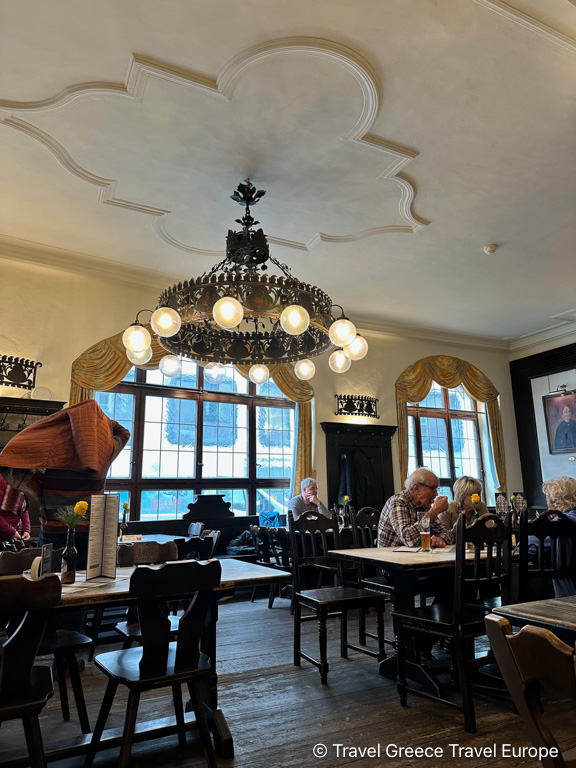
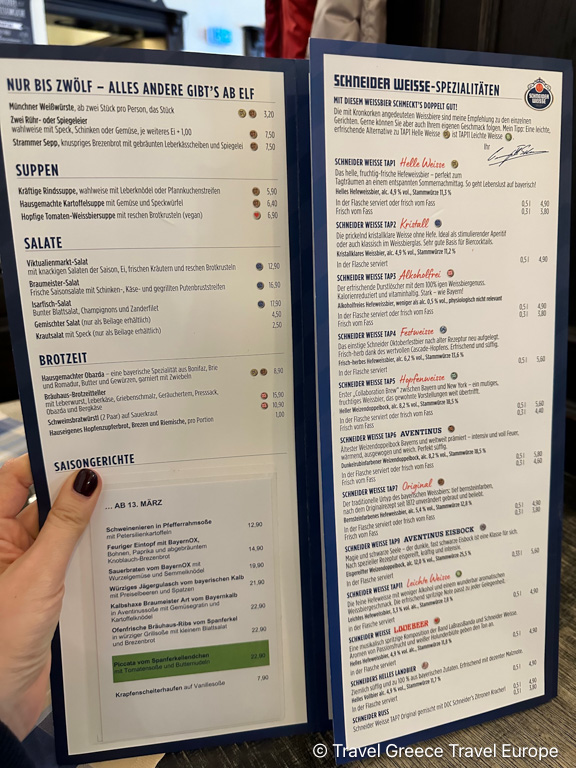
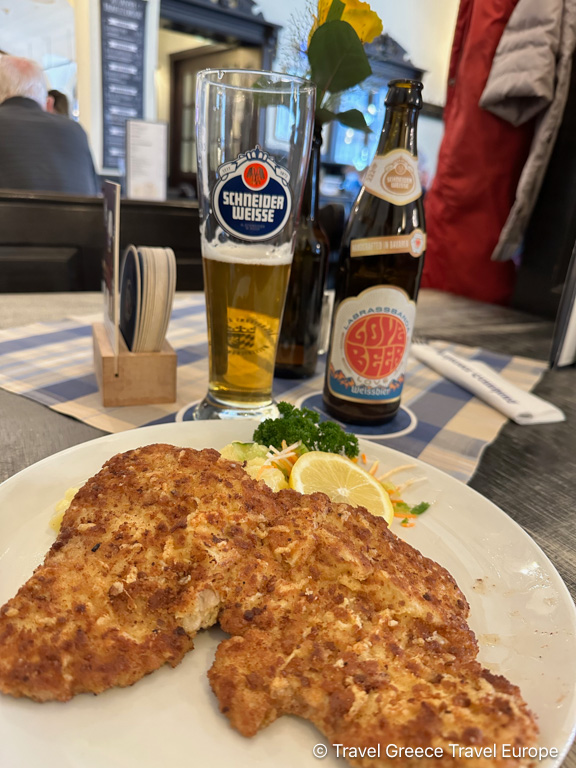
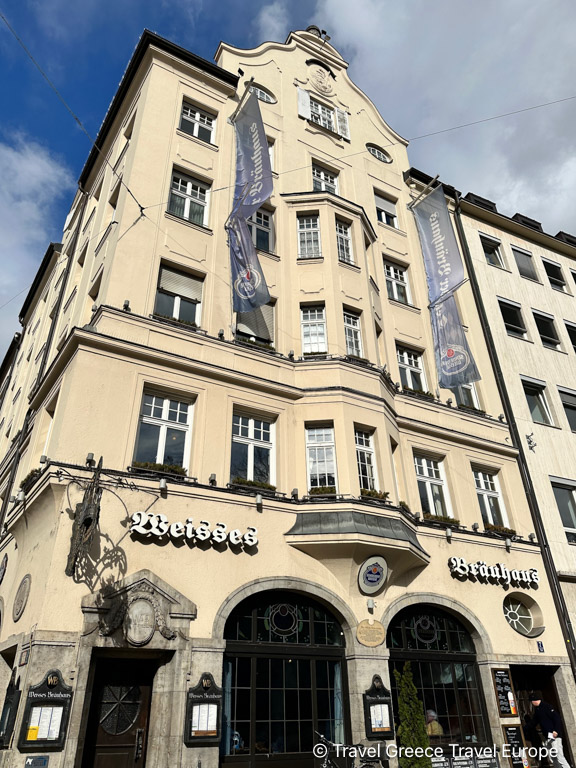
The welcoming ambiance and historic setting make it a must-visit for anyone looking to experience Bavarian hospitality at its best. The menu is in German, so make sure to master a few words before placing your order.
No culinary visit to Munich would be complete without a stop at the Viktualienmarkt, the city’s bustling open-air market. Here, you can sample a wide variety of local delicacies, from freshly baked pretzels to artisan cheeses, and even enjoy a light lunch at the beer garden located at the center of the market. The vibrant stalls, colorful produce, and delicious smells create a lively atmosphere, offering a perfect opportunity to savor Bavarian street food and mingle with locals.

For something other than Bavarian cuisine try the Servus Habibi which is located in several locations and offers delicious Mediterranean and Lebanese flavors. This fusion restaurant offers a creative menu that blends the best of both worlds, such as falafel platters with Bavarian-style dips or shawarma served alongside local beers.
Where to Stay in Munich: Hotels for Every Traveler
Whether you’re seeking a chic boutique experience, a classic luxury stay, or something in between, Munich offers a wide range of accommodation options to suit every preference. Here are some excellent hotels that cater to different styles and budgets, ensuring a comfortable and memorable stay in the Bavarian capital.

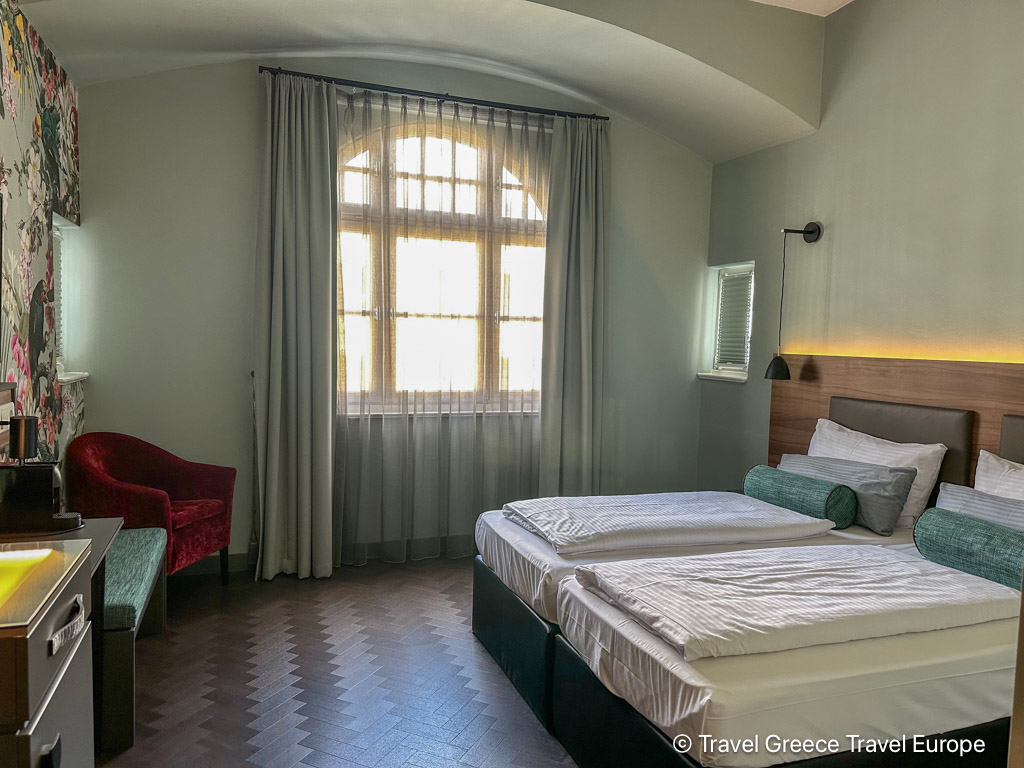
For a modern and stylish stay, consider Maison Schiller by Designcity Hotels. This boutique hotel is located just a short walk from Munich Central Station, offering a blend of contemporary design and comfort. The chic, minimalist decor and personalized service make it ideal for those who appreciate a sophisticated yet relaxed atmosphere, with easy access to the city’s main attractions.
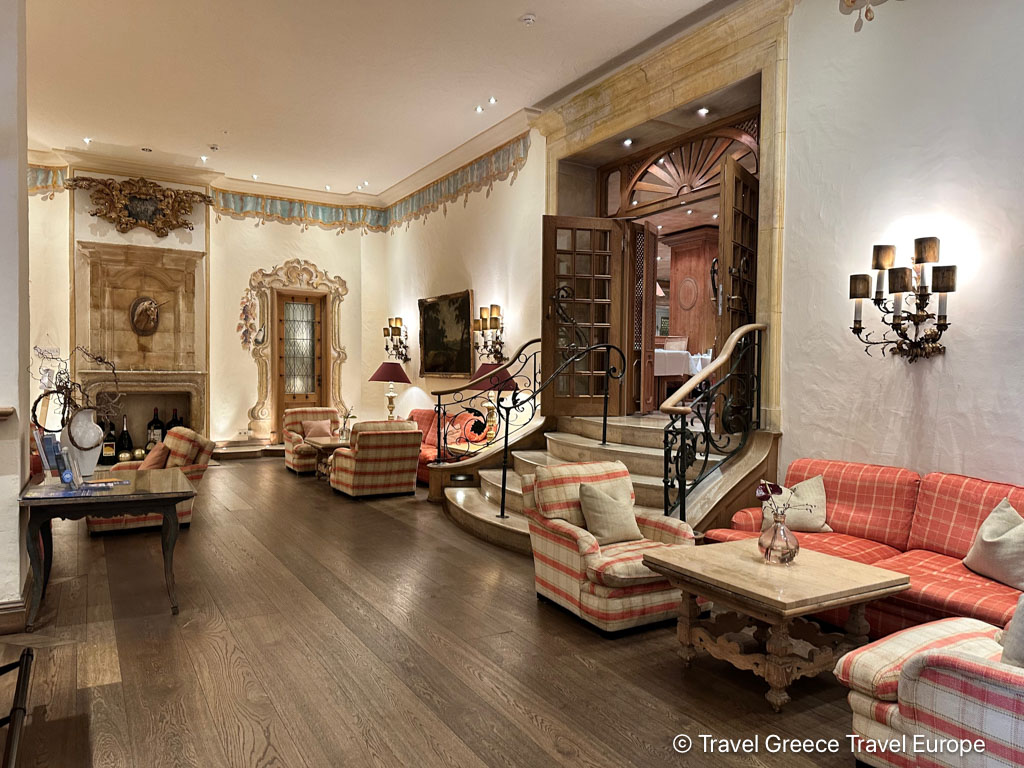

If you’re looking for a touch of traditional luxury, Excelsior by Geisel is a fantastic choice. Located near the main train station and just steps from the bustling Karlsplatz (Stachus), this elegant hotel combines Bavarian charm with modern amenities. With beautifully furnished rooms, an award-winning restaurant, and impeccable service, Excelsior by Geisel provides an upscale experience that showcases Munich’s renowned hospitality.
For travelers who want a central yet budget-friendly option, King’s Hotel Center Superior is a wonderful choice. Located in the heart of Munich, just a few minutes’ walk from the train station, this hotel offers a cozy Bavarian theme with traditional wooden furnishings and warm decor. Guests appreciate the hotel’s comfortable rooms, friendly staff, and convenient location that allows for easy exploration of the city.
Lastly, for those who want a trendy and vibrant experience, Hotel MIO by AMANO is an excellent option. Situated on the famous Sendlinger Straße, this hotel features stylish, modern interiors with an eye-catching design. Its location in the pedestrian zone puts you right in the middle of the action, surrounded by great shops, restaurants, and major sights like Marienplatz and Viktualienmarkt. The combination of playful design, comfortable amenities, and an unbeatable location makes Hotel MIO by AMANO perfect for young travelers and those who want to be at the heart of Munich’s energy.
Conclusion: The Magic of Munich in 2 Days
Two days in Munich is just enough to experience its grandeur, from the historic heart at Marienplatz to the serenity of its palaces and gardens. Whether you’re tasting Bavarian beer in an iconic beer hall or admiring the masterpieces at the Alte Pinakothek, Munich will leave you longing for more. Its blend of history, culture, and modern vibrancy is unforgettable—a perfect escape for every kind of traveler.

